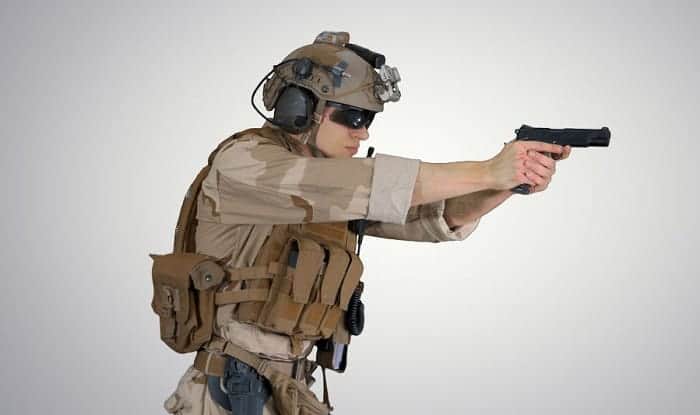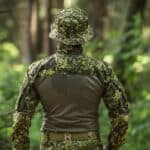Accessories, Guide & Ideas – Best plate carrier setup

The modern tactical vest is a sophisticated piece of equipment that allows the operator to carry a variety of tools and weapons, as well as provide protection from enemy fire. There are many different ways to set up a tactical vest, and the best way depends on the specific needs of the operator. In this article, we will take a look at some of the most popular tactical vest setups and discuss the advantages and disadvantages of each.
Tips for Using Your Plate Carrier Effectively
There is no “correct” way to load out a plate carrier, as each individual has different needs and preferences. However, there are some general guidelines that can help you get the most out of your setup.
First and foremost, your plate carrier should be comfortable to wear. It should fit snugly but not be so tight that it inhibits your movement or breathing. The straps should be adjustable so that you can customize the fit as needed.
Next, you’ll want to consider what type of gear you’ll be carrying in your plate carrier. If you’re planning on carrying magazines and other supplies, you’ll want to make sure there are ample pockets and pouches for storage. You may also want to consider adding a hydration system or other type of storage for longer missions.
Finally, you’ll want to think about how you want to arrange your gear on the plate carrier. There is no right or wrong way to do this, but you’ll want to make sure that everything is easily accessible and that nothing is in the way of your primary weapon. Experiment with different configurations until you find one that works best for you.
Keep these guidelines in mind when choosing and setting up your plate carrier and you’ll be sure to have a comfortable and functional setup that meets your needs.
The Different Types of Plate Carriers Available
1. One of the most popular tactical vest setups is the plate carrier setup. This setup typically consists of a plate carrier with integrated magazine pouches and other accessories attached. Plate carriers are designed to provide protection from ballistic threats and usually provide more coverage than other types of tactical vests. The main disadvantage of this type of vest is that it can be quite bulky and uncomfortable to wear for extended periods of time.
2. Another popular tactical vest setup is the chest rig setup. This setup typically consists of a chest rig with integrated magazine pouches and other accessories attached. Chest rigs are designed to provide a more streamlined appearance and usually offer less coverage than plate carriers. The main disadvantage of this type of vest is that it can limit the operator’s range of motion and may be more difficult to draw weapons from.
3. A third popular tactical vest setup is the belt kit setup. This setup typically consists of a belt kit with integrated magazine pouches and other accessories attached. Belt kits offer a more versatile option for carrying gear and usually provide more coverage than chest rigs. The main disadvantage of this type of vest is that it can be uncomfortable to wear for extended periods of time and may limit the operator’s range of motion.
No matter which type of tactical vest setup you choose, it is important to select one that best suits your needs. Each setup has its own advantages and disadvantages, so it is important to carefully consider all of your options before making a final decision. In general, the best way to find the right setup for you is to experiment with different configurations and see what works best for you. There is no “one size fits all” solution when it comes to choosing the best tactical vest setup, so take your time and find the one that provides the most benefits for your specific needs.
What should be on your tactical vest
A good plate carrier setup should always include a few key items in order to be effective.
First and foremost, you need to have a strong and sturdy plate carrier that can hold up to the rigors of combat.
Secondly, you need to make sure that your plates are properly secured within the carrier. This will ensure that they do not shift around during movement and become dislodged.
Third, you need to have a good set of mag pouches attached to your carrier. These will allow you to quickly and easily access additional magazines when needed.
Fourth, you should also consider attaching a medical pouch to your carrier. This will give you quick access to first aid supplies in the event that you or a fellow soldier is injured.
Fifth, you may also want to consider attaching a map pouch to your carrier. This will allow you to quickly and easily reference a map during combat operations.
Sixth, you should also consider attaching a flashlight pouch to your carrier. This will give you the ability to illuminate dark areas and identify potential threats.
Seventh, you may also want to consider attaching a multitool pouch to your carrier. This will provide you with quick access to a variety of tools that can be used in various situations.
Eighth, you should also consider attaching an ammunition pouch to your carrier. This will give you quick access to additional ammunition when needed.
Lastly, you may also want to consider attaching a water pouch to your carrier. This will ensure that you always have access to clean drinking water during combat operations.
Conclusion
Once you have your plate carrier, it’s important to learn how to use it effectively. Depending on the situation, you may want to adjust how you wear your plate carrier. For example, if you’re going into combat, you’ll want to make sure that your plates are properly secured and that your magazine pouches are easily accessible. If you’re simply going on a patrol, you may not need to wear your plates and can instead focus on carrying extra ammunition and other gear. No matter what the situation, it’s important to be familiar with your plate carrier and all of its features. By doing so, you can be sure that you’re using it in the most effective way possible. Remember, the most important thing is to find what works best for you and your situation. Be sure to experiment with different combinations of gear until you find the perfect setup for you. Thanks for reading and good luck out there!


